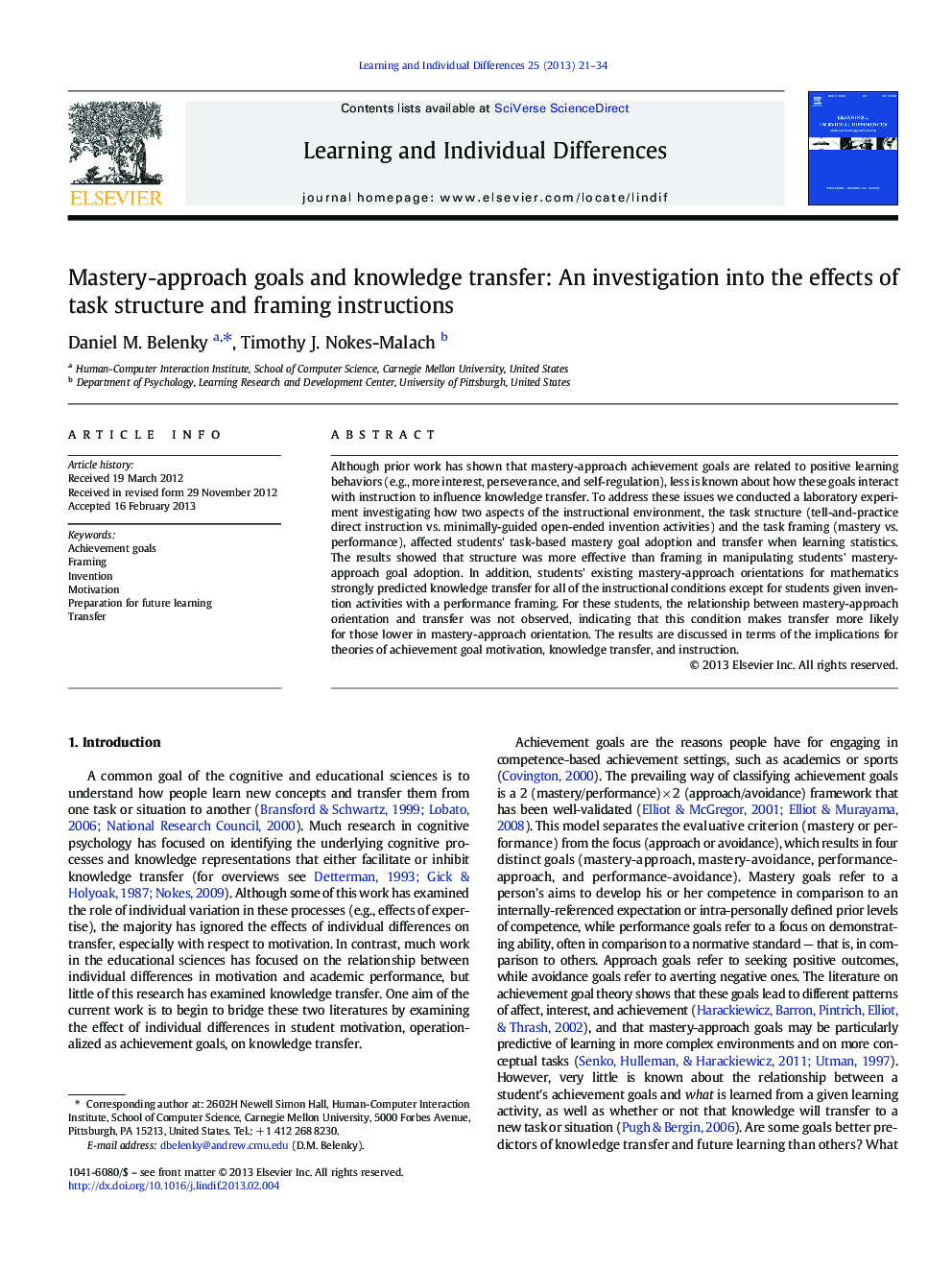| Article ID | Journal | Published Year | Pages | File Type |
|---|---|---|---|---|
| 365090 | Learning and Individual Differences | 2013 | 14 Pages |
Although prior work has shown that mastery-approach achievement goals are related to positive learning behaviors (e.g., more interest, perseverance, and self-regulation), less is known about how these goals interact with instruction to influence knowledge transfer. To address these issues we conducted a laboratory experiment investigating how two aspects of the instructional environment, the task structure (tell-and-practice direct instruction vs. minimally-guided open-ended invention activities) and the task framing (mastery vs. performance), affected students' task-based mastery goal adoption and transfer when learning statistics. The results showed that structure was more effective than framing in manipulating students' mastery-approach goal adoption. In addition, students' existing mastery-approach orientations for mathematics strongly predicted knowledge transfer for all of the instructional conditions except for students given invention activities with a performance framing. For these students, the relationship between mastery-approach orientation and transfer was not observed, indicating that this condition makes transfer more likely for those lower in mastery-approach orientation. The results are discussed in terms of the implications for theories of achievement goal motivation, knowledge transfer, and instruction.
► We test the role of achievement goal motivation in transfer from instruction. ► Instruction was manipulated in a 2 (task structure) × 2 (framing) design. ► Existing mastery-approach goals (MAP) predict transfer from instruction overall. ► Open-ended invention task structure promotes mastery goal adoption. ► Invention structure framed in a performance-oriented way benefits low MAP students.
